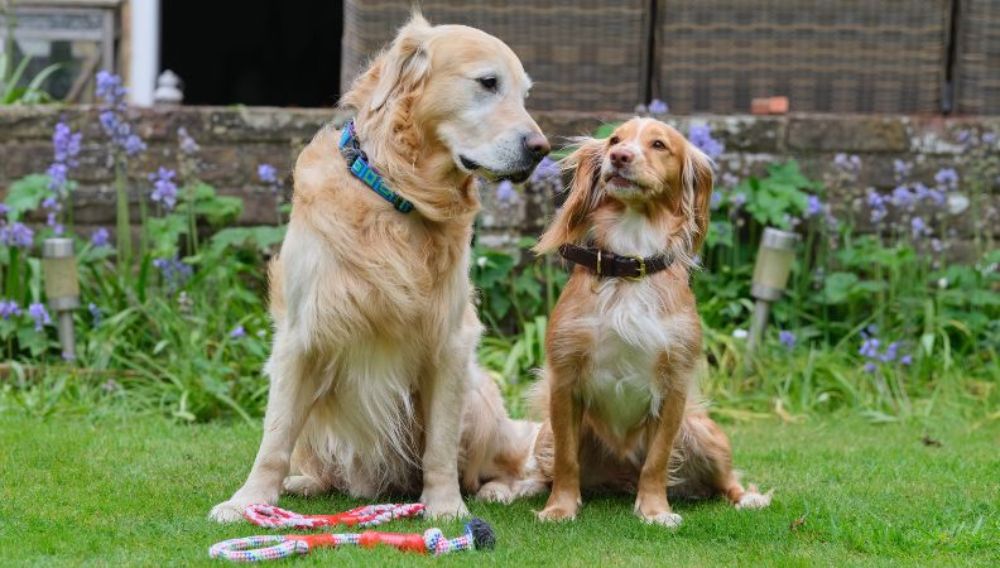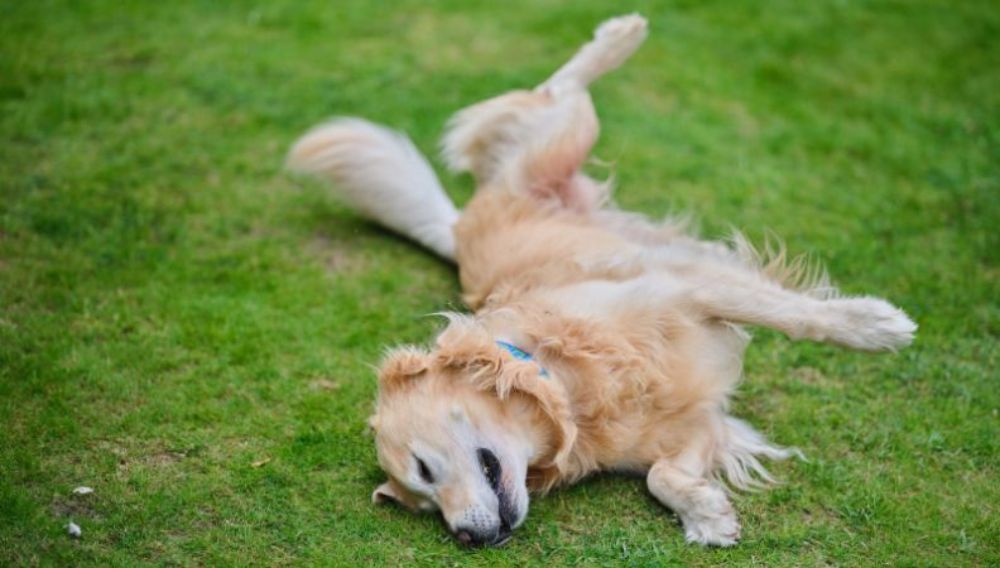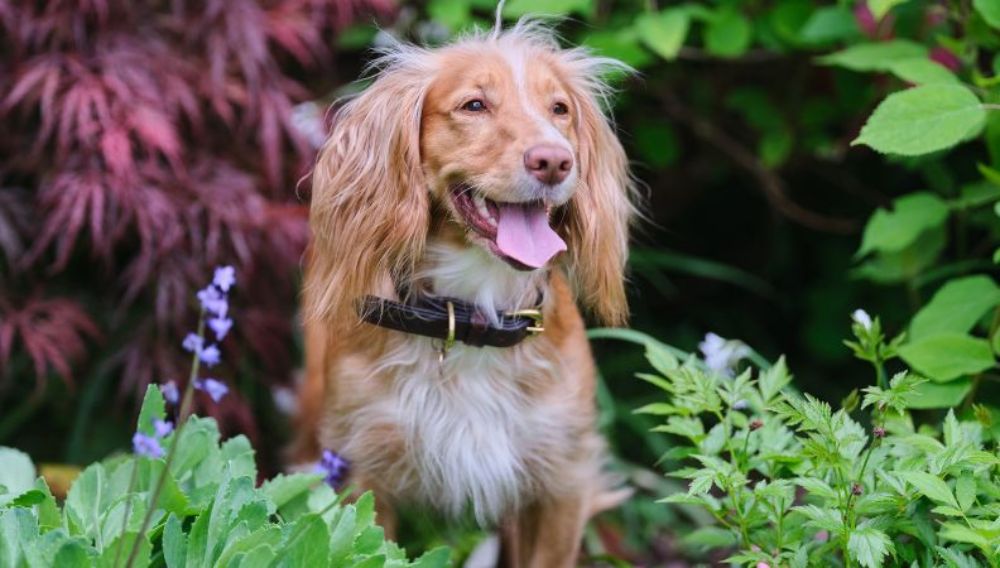Popular dog breeds have shifted over the last 10 years as French Bulldog registrations rise by 508%!!
We are a nation of dog lovers and, from the trusty border collie to the loyal labrador, everyone has their favourite dog breed. Every year the most popular breeds change, with many firm favourites declining and underdogs (excuse the pun) rising.
In light of this, we have analysed registration data from The Kennel Club and created an interactive graph to highlight how the most popular dog breeds have changed over the last 10 years.

Digging into the Data
Labradors have consistently proved to be the nation’s favourite, staying in the top spot for the majority of the last decade, with a total of 388,820 registrations since 2013. In second place, French Bulldogs have skyrocketed and seen a huge 508% increase in registrations over the last decade. Interestingly, Miniature Smooth Haired Dachshunds have also seen a remarkable rise since 2013, just over 433%!
Everypaw's resident vet Dr Anna Foreman says: “Exposure of [French Bulldogs] in the media, TV and film has then played a large part in their popularity – many celebrities own Frenchies (such as Lady Gaga) and they have been seen in many adverts, TV programmes (such as Modern Family) and movies (such as Titanic).
“A lack of knowledge regarding their many health concerns has also helped their popularity – many new French bulldog owners are unaware of their likelihood to need veterinary intervention, and relatively short lifespan as a result, and the costs associated with the diagnosis and treatment of their many common health conditions.”
Interestingly, Pugs have seen a decline in popularity with a 68% decrease over the last 5 years, going from 10,783 registrations in 2013 to just 3,451 in 2022. Dr Anna says “Pugs are a more extreme version of a French bulldog, with their health issues more publicly broadcast than Frenchies.
“Pugs are generally considered more highly strung than French Bulldogs, with the ‘easier’ personality type preferred amongst owners also being simpler to train.”
Dr Anna adds: “Although Kennel Club registrations may be falling, people are still breeding and buying Pugs, just not advertising or selling them as kennel club registered. The likely reasons behind this are the costs associated with registration, and the limitation on number of litters, age of the dam, and inbreeding by the kennel club.”
Many breeds have seen an overall decrease in registrations between 2021 and 2022, including the top 3 most popular breeds:
- Labradors - 28% decrease
- French Bulldog - 21% decrease
- Cocker Spaniel - 24% decrease
Dr Anna says “Brexit has limited movement of animals in and out of the country, COVID changed many people’s lifestyles for a short time, and the cost-of-living crisis has left many people short financially. All of these events have led to a change in dog ownership.”
To celebrate the UK’s favourite furry friends of the last 10 years, Dr Anna has created a guide to the top 4 most popular dog breeds: Labradors, French Bulldogs, Cocker Spaniels and Miniature Daschunds. If you are thinking about bringing a new furry friend into your home, here is what you need to know about the nations most loved dog breeds:
Labrador Retriever Factfile

Labradors are an all-round relatively healthy, behaviourally sound (with the right training), active, intelligent, and friendly breed of dog. They are good looking with kind eyes and expressive faces, with puppies being especially ‘cute’ – the Andrex puppy helped to publicise this breed extensively! They are generally calm and laid back but active, fitting in with most households well, and are easy to train.
Key characteristics of Labradors include:
- Labradors are a medium/large breed of gun dog, weighing around 25-35kg (average 30kg), and traditionally coming in the colours yellow, black and chocolate, although ‘fox red’ and ‘silver’ Labradors are also seen in the modern day.
- The lifespan of a Labrador Retriever is around 10-12 years.
- They are commonly kept as companion dogs, however are also used as working dogs, both for game hunting and as assistance dogs.
- Labradors do not require the upkeep of some breeds of dog – for example they have a short coat which does not require clipping
- They love water and have a water-resistant coat to support this hobby!
- Due to their breeding history Labradors can be prone to orthopaedic disease such as elbow and hip dysplasia. Equally they can also suffer from inherited eye disease such as progressive retinal atrophy (PRA).
- Labradors are also prone to obesity - orthopaedic conditions such as arthritis can worsen with obesity due to excessive weight through the bones and joints, and so should be kept trim. Due to being prone to obesity, Labradors are also prone to developing fatty lumps. Labradors must be kept active both mentally and physically
You can find out more here in our Labrador Breed Guide.
French Bulldog Factfile

A Frenchie is seen to have a very expressive, teddy bear like face with its short nose and large bat ears, almost human-like, all very ‘desirable’ features for a dog. The breed has unfortunately been bred to extremes in recent years, dogs being selected for short faces and spines which has led to a multitude of serious health issues arising with the breed.
Key characteristics of French Bulldogs include:
- French bulldogs (or ‘Frenchies’) are a small breed of companion dog, weighing around 8-12kg (average 10kg). The breed is of a small size and so fits in well in most homes, especially urban ones.
- They are seen in multiple colours, including brindle and fawn, and some other colours which are linked to genetic health problems such as blue.
- Frenchies are kept as companion dogs, generally having a close relationship with people and as such commonly suffer with separation anxiety.
- They are brachycephalic (short nosed) dogs, and so often suffer from brachycephalic obstructive airway syndrome (BOAS).
- The breed can also suffer from spinal disease if they are born with congenital hemivertebrae, abnormalities of the vertebrae, which can cause spinal cord compression and subsequent paralysis.
- Frenchies have a frequent incidence of maternal-foetal disproportion due to having a narrow pelvis and pups having large heads, requiring around 80% of dogs to need a caesarean section when giving birth.
- French bulldogs often suffer from ocular disease due to protruding eyes, and allergic skin and ear disease.
- They can also suffer from stifle (knee) disease, such as luxating patella (dislocating knee cap) due to their short stocky stature.
- A healthy French bulldog with a long nose has the potential to live for between 10-12 years, however the average is only around 5 years due to prevalent health issues.
French bulldogs should only be purchased from responsible breeders who are not breeding their dogs to extremes. Although it is only possible to fully BOAS assess a dog when they are an adult, puppies should be assessed for their nostril wideness, and monitored for exercise and heat intolerance when young. Their parents should both be visualised to check for health issues too – if unsure, walk away.
You can find out more here in our French Bulldog Breed Guide.
Cocker Spaniel Factfile

Cocker Spaniels are commonly kept as companion dogs, however traditionally are a working breed of dog – there are generally two ‘types’ of cocker spaniel in the UK, ‘working’ cocker spaniels who tend to be smaller, slimmer and more active, and ‘show/house’ cocker spaniels who tend to be larger, stockier and more docile.
Key characteristics of Cocker Spaniels include:
- Cocker spaniels are a small/medium breed of working dog, weighing around 12-15kg. They are commonly seen in a variety of colours and coat patterns including roans and tricolours.
- Working cocker spaniels are very energetic dogs, requiring an active and mentally stimulating lifestyle to prevent the development of behavioural issues. Show cocker spaniels tend to be calmer, however still require mental and physical stimulation as with all dogs!
- The lifespan of a Cocker Spaniel is generally around 12-15 years.
- Cocker Spaniels tend to be relatively healthy dogs, however can still suffer from skin allergies (particularly ear infections).
- They are also prone to behavioural issues such as aggression towards humans and other dogs.
- Cocker spaniels can also suffer from hip dysplasia and patella luxation, however less commonly so than some other breeds.
- They are highly intelligent and so need high levels of mental and physical stimulation – they need good training and handling and a ‘job’, such as scent training or agility, to perform if they are not ‘worked’ traditionally.
You can find out more here in our Cocker Spaniel Breed Guide.
Miniature Dachshunds Factfile

Miniature Dachshunds are characteristic for being ‘sausage dogs’ with very short legs compared to a long spine. They are cheerful and playful, however can be stubborn, anxious, and even aggressive to humans and other dogs, commonly bark and can be prone to separation anxiety.
Key characteristics of Miniature Dachshunds include:
- Miniature Dachshunds are a toy/small breed of companion dog, weighing between 4-8kg.
- They either have smooth, wirehaired or long-haired coats in a variety of colours, commonly red or black and tan. The merle/dapple coat colour is linked with genetic abnormalities.
- Miniature Dachshunds are kept as companion dogs, however have roots in scent and hunting work.
- The lifespan of a healthy Miniature Dachshund is around 10-12 years.
- Miniature Dachshunds are prone to spinal disease, particularly intervertebral disc disease (IVDD) due to their long spines.
- Miniature dachshunds can also be prone to developing limb disease due to being chondrodystrophic – patella luxation is commonly seen in the breed.
- Dapple or merle dachshunds can be prone to ear and eye disease too.
Consider the Costs of a Dog
If you are considering taking on any dog, it is important to consider the costs of pet healthcare. The fee paid for the animal will be very small in comparison to the ongoing costs of feeding, housing, and veterinary treatment etc.
If you're thinking about pet insurance for your dog, think about the value and type of your policy you're looking to buy. Costs of treatment are rising, so you should consider how the level of cover you choose can be used to cover the costs. Everypaw offer Lifetime policies with cover levels ranging between £1,000 and £10,000.
It is also important to consider whether you will have enough time to give to a pet – dogs must have company for much of the day and be exercised regularly, with this lifestyle not suiting every household.
Everypaw Dog Insurance
Everypaw's Dog Insurance comes with 24/7 unlimited access to vets and vet nurses that can help with your pet's health, care, nutrition and behaviour. So you can rest assured your pup will be well looked after.